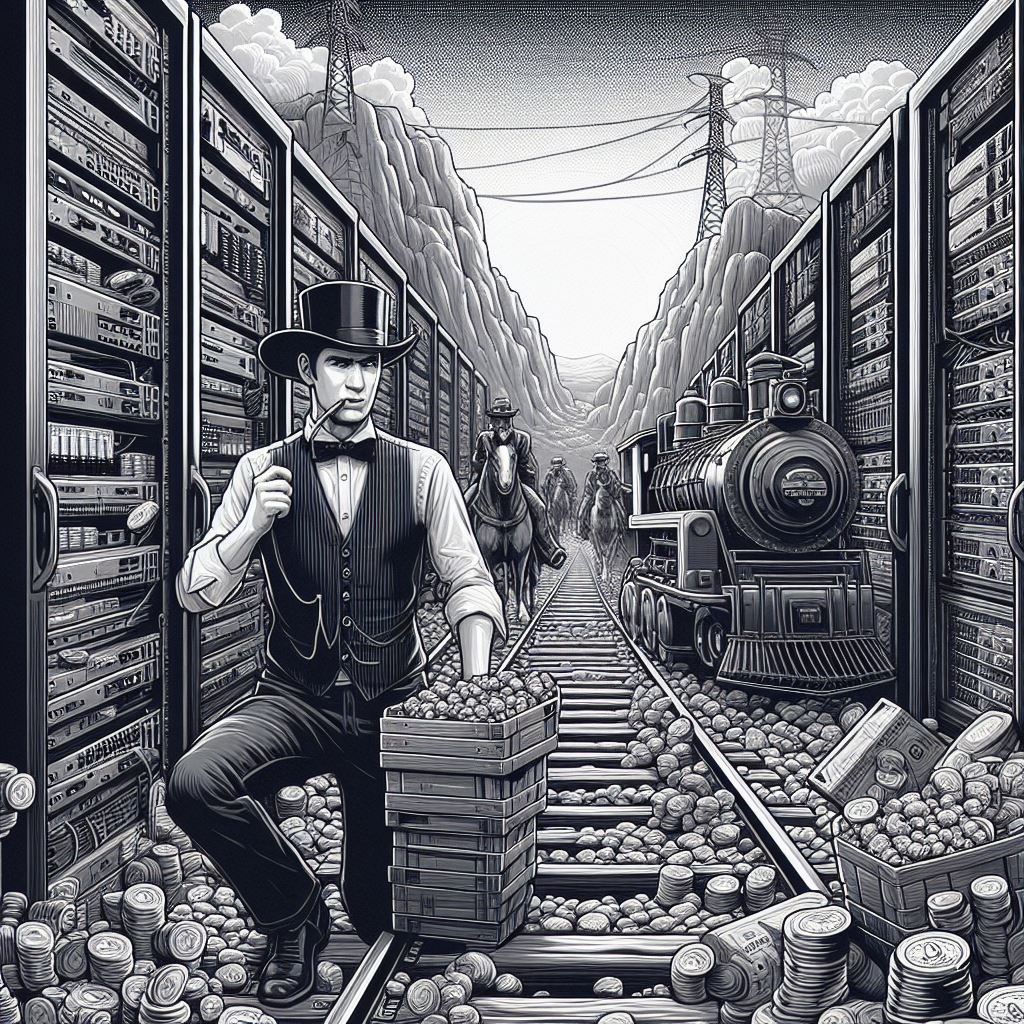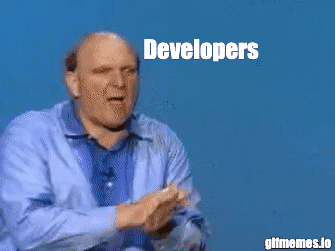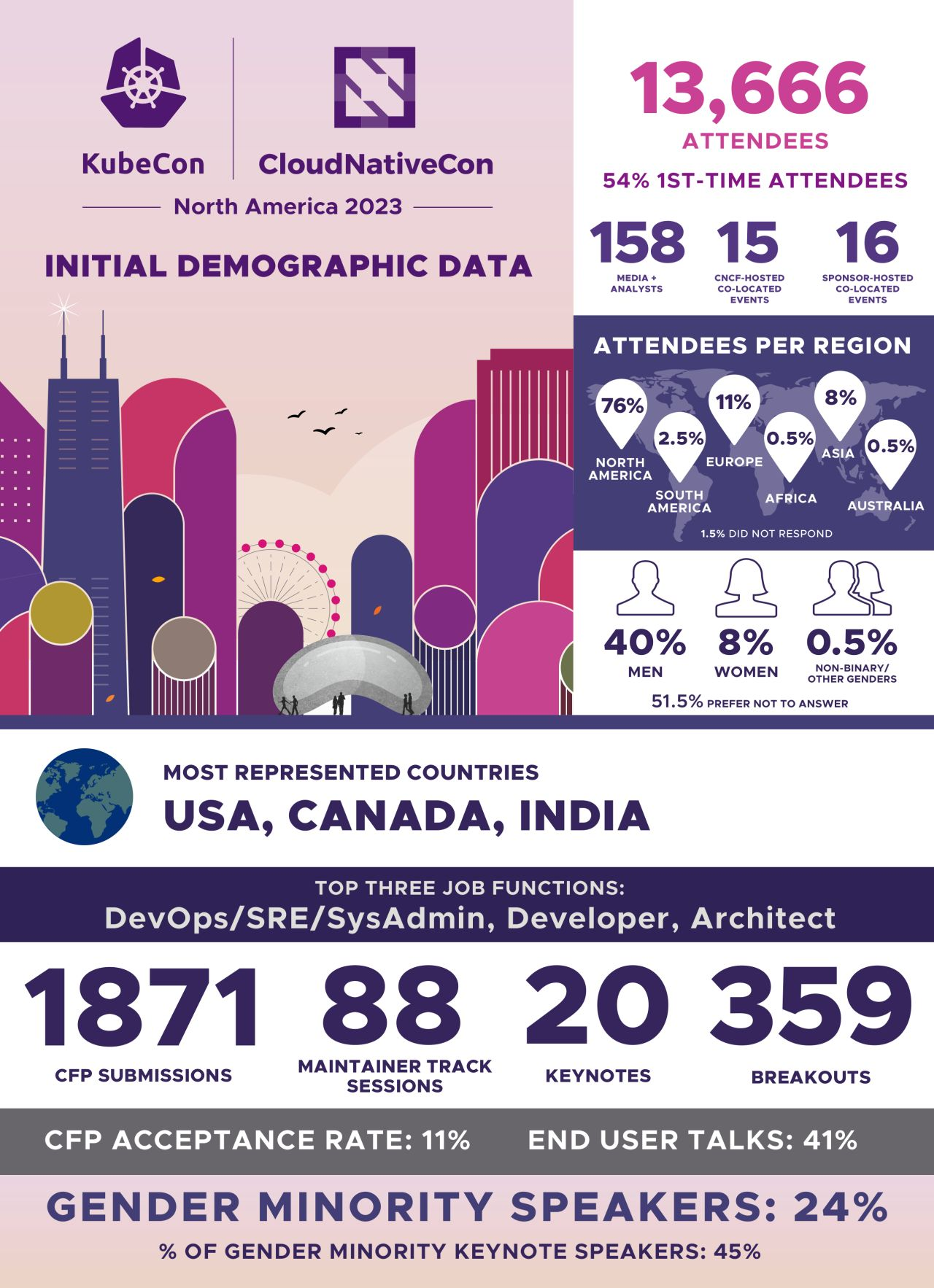What were the most prominent topics in during the sessions and Hallway Tracks at the KubeCon 2023?
This year’s North America edition of the KubeCon took place in Chicago. What a beautiful city. As someone who only experienced the United States through movies, it felt a bit surreal at first, because around each corner or location I felt like I had seen this exact scene in a movie.
From 5th to 9th November, people all over the world came together to talk and discuss the future and direction of the Cloud Native ecosystem with various CNCF projects and Kubernetes.
I was also present with colleagues and friends to represent the Harbor. During that week, I participated in two presentations and spent some time at the Harbor project booth speaking with Harbor users.
Due to those duties, I was unable to attend many sessions; yet, I was able to attend quite a few keynote sessions and have many discussions with speakers and maintainer and developers at the booths. This equipped me with a good feeling about what does the Cloud Native crowd has on their agenda for 2024.
I took away some exciting insights from discussions and presentations at KubeCon 2023, the current hypes and long-term developments in the cloud-native landscape. I used the last two weeks after KubeCon to catch up in tranquility on talks that I had reserved and not attended, as well as some talks that were recommended to me.
KubeCon 2023 left me with several key takeaways:
There was a gold rush atmosphere like in the movies. There were gold diggers and shovel sellers. I witnessed both groups in action, and with almost a third of the talks focusing on AI, it was crystal clear that AI took center stage at KubeCon.

Generative AI picturing the Goldrush in Cloud Native
In that regard, Tim Hockin’s keynote at KubeCon highlighted key thoughts for the future of Kubernetes. The surge in cloud adoption, ubiquitous containerization, and the impending wave of AI and ML workloads present both opportunities and challenges. The need for Kubernetes to evolve into a platform of choice for AI and ML, simplifying multicluster management, and addressing the growing complexity within the project and its ecosystem were central concerns. The call to manage a “complexity budget” and potentially streamline the landscape reflects a recognition that simplicity and focus may be pivotal in Kubernetes' success over its second decade. The quote, “Kubernetes should stay unfinished,” serves as a rallying cry for continued evolution and adaptation for the next decade.
Platform Engineering is overshadowing DevOps. Even though DevOps was not mentioned in the talk titles, the essence of the topic was present in the hallways. This shift is the consequences of realizing that productivity and quality drop if each builds and operates the same application runtime infrastructure end to end. This is where Platform Engineering teams create common solutions to simplify deployment and operational complexities. Application teams still need to «DevOps» things, but far less outside their application, especially not the whole stack.
A very helpful instrument to gauge where your organization currently stands is the Platform Engineering Maturity Model. This framework offers organizations to measure the maturity of their effort and improve their internal platforms. It emphasizes the collaborative nature of platform engineering in providing optimal computing environments for internal users.


Another topic that is frequently mentioned and reiterated as a mantra is Developer Experience, also referred to as end user experience, depending on ones perspective. It has made a few appearances in the Keynote, but has also been a prominent topic in numerous discussions.
If you consider that we are entering the next decade of Kubernetes and Cloud Native, the ecosystem is moving beyond early adopters and innovators to be suitable for the majority. In my opinion, it makes sense to emphasize more on Developer Experience.
In her lightning talk on choosing the right abstraction for developer experience, Rosemary Wang emphasizes the challenge of finding the optimal platform interface. While higher-level interfaces offer standardization, they often lack customization. Wang introduces GitOps as a solution for platform updates, providing a familiar interface for developers. She underscores the importance of an escape hatch in the form of Version Control, asserting that, despite various options available, developers will inevitably need to support multiple abstractions for a well-rounded platform experience. I would like to add that I think that the Open Container Initiative (OCI-Spec) may be a suitable when not a better alternative to Version Control.
Sustainability was a major focus in the keynotes and sessions. Why? Because data centers consume around 2% of global power, and we’re approaching the critical 1.5 °C global warming limit. This serves as a wake-up call for the IT industry.
To address this issue, we need accurate metrics to identify where we’re emitting the most carbon. This is a challenge in sustainability – understanding our carbon footprint in software and infrastructure isn’t easy.
The Green Software Foundation has developed the Software Carbon Intensity specification, allowing us to calculate the carbon intensity of software. Additionally, the Carbon Aware SDK helps identify sustainable energy sources, supported by Kepler, an open-source project for energy monitoring using Prometheus and eBPF.
You can’t say Service Mesh without mentioning eBPF. It’s hard to overlook the significant role played by eBPF in Service Meshes, a low-level technology that continues to mature. At KubeCon Cilium and its parent company, Isovalent, made a notable presence with three booths, showcasing the different tools and for different audiences. In recognition of its achievements, Cilium was promoted to a graduate project, underscoring its importance.
For those fascinated by documentaries, I highly recommend watching the beautiful, orchestrated and entertaining documentary about eBPF.
Web Assembly (Wasm) took the spotlight at the event. Alongside eBPF, it stood out as one of the most discussed low-level technologies. Many engaging discussions revolved around Wasm’s application in developing extension plugins for API gateways and service meshes.
Tim Hockin emphasized the challenges posed by the growing complexity of the Kubernetes service API, which, after nearly 10 years, is limiting evolution and causing implementation and testing difficulties. He proposed the Gateway API as a potential replacement, highlighting its flexibility and composability, allowing users to choose what they need from different implementations. Tim acknowledged that these ideas are not commitments but encouraged feedback from the community to explore and improve the concept further.
My Kickoff started with a lightning talk about Dynamically Proxying Helm Charts as OCI Artifacts. Even though the lightning talk only lasts 5 minutes, it takes the same amount of preparation to create the talk and get the message across well in that short amount of time.
My second talk together with Wang Yang was about Harbor the new features coming in 2.10, and the Harbor superpowers for different user groups like Ops, CISOs, and developers appreciate the most.
In details, I was talking about
This 90-minute tutorial is an introduction to various CNCF graduated projects, simplifying the often challenging process of self-learning about cloud native projects. The tutorial covers the installation, setup, and usage of key tools such as containerd, Kubernetes, Harbor for container registry, Helm for application deployment, Prometheus for monitoring, fluentd for logging, and Open Policy Agent/Gatekeeper for admission control.


Find out how Harbor-based Container Registry can streamline your container management!
For particularly busy platform teams, we offer a Harbor-based managed container registry service, which we simply call Container Registry.
Our Registries are hosted across various cloud providers, offers all must-have features including SSO, RBAC, vulnerability Hub, etc., and has a storage-based pricing model.
Published — November 28, 2023